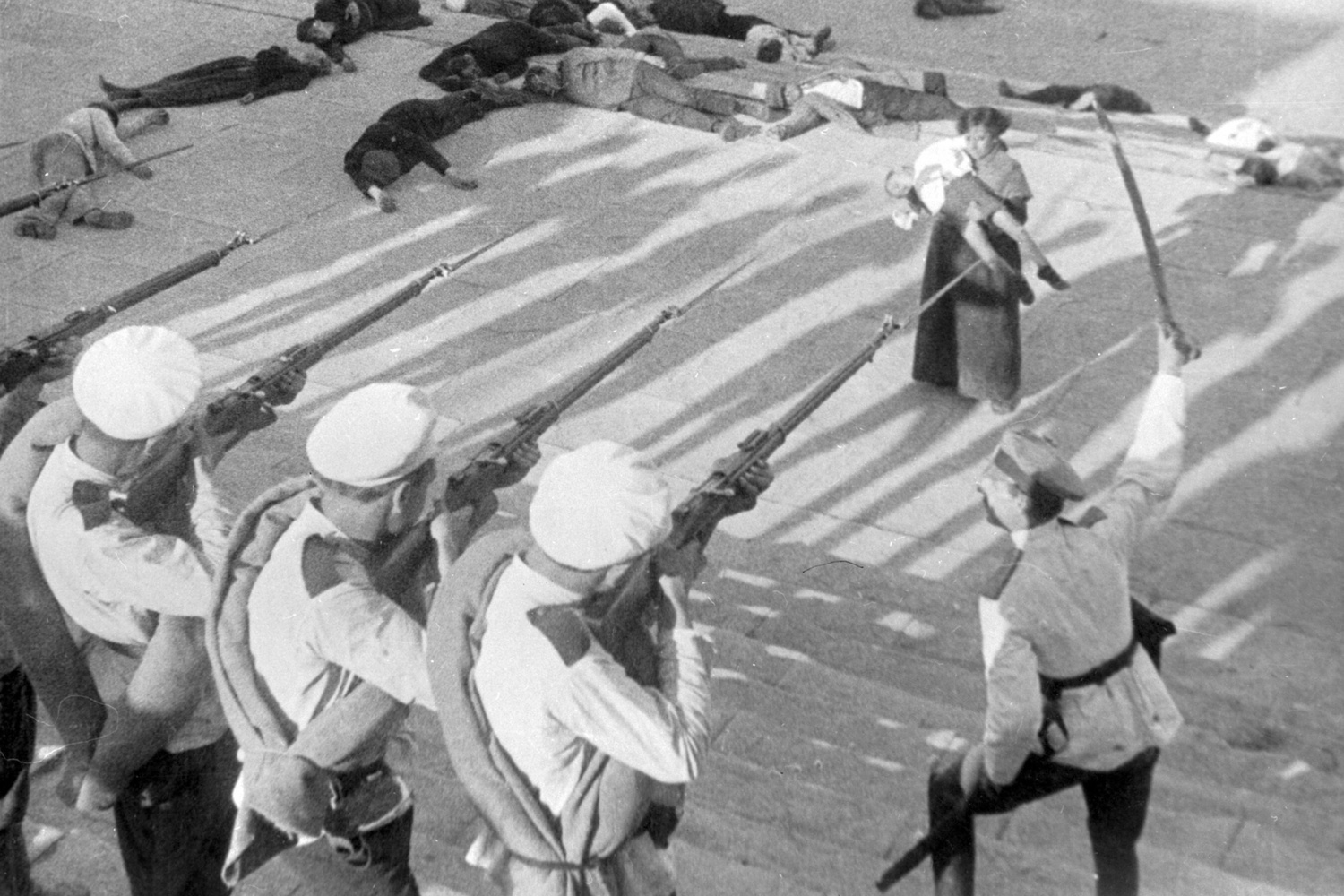The Soviet Montage movement, emerging in the 1920s, revolutionized cinema by emphasizing the power of editing to convey complex ideas and evoke emotional responses. Filmmakers like Sergei Eisenstein believed that juxtaposing disparate images could lead audiences to new interpretations and insights.
Sergei Eisenstein's Battleship Potemkin dramatizes the 1905 mutiny of Russian sailors against their oppressive superiors. Renowned for its innovative use of montage, the film's "Odessa Steps" sequence masterfully employs rapid editing to heighten tension and emotion, showcasing the potential of montage to influence audience perception.
Why is Battleship Potemkin Significant in Soviet Montage?
Battleship Potemkin exemplifies Soviet Montage by using editing techniques to create meaning beyond individual shots. Eisenstein's approach demonstrates how the collision of images can produce intellectual and emotional effects, influencing the viewer's understanding and response.
Discussion Questions
Film Technique: In the "Odessa Steps" sequence, how does Eisenstein's use of rapid cuts and varying shot angles intensify the sense of chaos and urgency?
Genre/Cultural Context: How does Battleship Potemkin reflect the political climate of 1920s Soviet Union, and what role does it play as a piece of revolutionary propaganda?
Director's Signature: What specific editing techniques in Battleship Potemkin are characteristic of Eisenstein's style, and how do they serve the film's narrative?
Personal Response: Did you like Battleship Potemkin? Why/Why not?


1. In the "Odessa Steps" sequence of Battleship Potemkin, Eisenstein uses rapid montage editing and dramatic shifts in camera angles to heighten emotions among the audience and to highlight the chaos of the massacre. The rapid cuts between scared civilians, the march of soldiers, and the close-ups (such as the baby carriage falling down the steps) create a visually chaotic scene of confusion and disorientation, drawing the reader closer to the moment. As chaos ensues, it allows the viewer to depict each part of the scene, overwhelming them in that process.
ReplyDelete2. Battleship Potemkin reflects the 1920s Soviet Union, drawing attention to the revolutionary notion/drive at the time. The film itself glorifies the collective action and rebellion against a higher power and oppressive authority. The movie's portrayal of the sailors' rebellion and stance for independence supports the ideas of communism prevalent at the time. The film was used as propaganda to show ordinary people that they could come together in unity to fight injustice, matching the Soviet government's goal of promoting rebellion against the old system.
3. In Battleship Potemkin, Eisenstein is known for his use of montages, where he puts different images together to evoke strong feelings among the audience. In the case of the movie, for this time of age, he masterfully captures how the rebellion happens, but also how it felt to be one of the sailors. An example of one of his montages would be a close-up of a person crying, then a soldier's boots, and then a crowd running away. These images simultaneously work together to make the audience feel anger, fear, and unease. This editing style helps to tell the story in a meaningful way while making the message of unity and overthrow very clear.
4. In brutal honesty, I did not like this movie at all. Although it was effective for its time, it was very painful and hard to watch because it was so boring and time-consuming. I often found myself losing interest in the plot as there was a lack of storytelling (most likely because it was older propaganda). Next time, I will take Mr. Lin’s suggestion to watch the Cabinet of Dr. Caligari instead of this film.